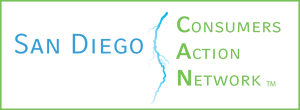 Paleo, Vegan, Mediterranean, Raw Food, South Beach, Jenny Craig, Nutrisystem, Red Mountain, Medifast…….all of these diets can be very confusing. No, actually they ARE confusing. They are selling you the goal you are wanting: to lose weight and feel better. BUT, in most cases, they want to sell you their system. The most common mistake made by consumers is that they’ll spend money (needlessly) and set unreasonable (or distasteful) objectives to detoxify, cleanse or rid their body of whatever. So many of these detox systems are totally useless. And they don’t have to spend a lot of money to succeed in losing weight or feeling better. Ironically, the most successful dieters end up spending LESS money for food.
Paleo, Vegan, Mediterranean, Raw Food, South Beach, Jenny Craig, Nutrisystem, Red Mountain, Medifast…….all of these diets can be very confusing. No, actually they ARE confusing. They are selling you the goal you are wanting: to lose weight and feel better. BUT, in most cases, they want to sell you their system. The most common mistake made by consumers is that they’ll spend money (needlessly) and set unreasonable (or distasteful) objectives to detoxify, cleanse or rid their body of whatever. So many of these detox systems are totally useless. And they don’t have to spend a lot of money to succeed in losing weight or feeling better. Ironically, the most successful dieters end up spending LESS money for food.
The Importance of Planning
There’s only one thing that really works: planning. And it has to be your plan that fits you. That’s why we recommend adapting a lifestyle that works for your life. For example, we think there’s a lot of common-sense and good science supporting a Pegan or Mediterranean diet. We also that Jamie Oliver’s Superfood lifeplan makes a lot of sense. But each of these lifestyle plans requires, first and foremost, planning. That’s the secret behind achieving your New Year’s resolution. Start with making a meal preparation list and a corresponding shopping list each day. You can even have fun and create a “menu” template that you can fill in, weekly, with your planned meals. Between planning, avoiding processed and high-calorie foods and reducing expensive meats and alcohol from your daily meals, you’ll find that you will lose weight and add dollars to your budget.
Betting On Yourself
Some people actually MAKE more money if they lose weight. One relatively novel idea is that you make a bet. You don’t even have to go to Lost Wages, Nevada to make this wager. Try HealthyWage. It turns out that if you put some money on the line, there’s a demonstrably higher likelihood that you’ll meet your goals. For real. At Healthy Wage, you can build your own weight loss challenge and, if you meet it, you can actually win more money than you paid out for the bet. This is a real and apparently effective means of losing weight, so long as your goal is more than 10% of your body weight.
In 2013, the Mayo Clinic conducted a study on 100 participants, divided into four groups. All of them were tasked to lose up to 4 pounds per month for a year. Two groups (the incentive groups) were paid $20 per month if they met the goal, while those who failed had to pay $20 penalty. 62% of the group that had a monetary incentive succeeded, versus 26% where there were no incentives. Similarly, the dieters who were paid to lose lost over 9 lbs, on average. The ones who didn’t only lost about 2 lbs. So incentives work and Healthy Wage gives you a means of creating your own incentives. If you choose to use this resource, check out the tips on how best to use Healthy Wage.
Why The Mediterranean Diet is The Gold Standard
Not only can a Meditteranean-based diet and lifestyle lead to weight-loss and saving money, but it may also do wonders for your gut biome. Your intestines are likely to be happiest on this diet. An on-going European study has found that people over 65 who switched to Mediterranean-type diet not only lost weight but improved their overall healthfulness by making their gut healthier. When we talk about a Mediterranean diet, we are talking about a diet features simple, plant-based cooking, with the majority of each meal focused on fruits and vegetables, whole grains, beans and seeds, with a few nuts and a heavy emphasis on extra virgin olive oil. Fats other than olive oil, such as butter, are consumed rarely, if at all. Meat can make a rare appearance, usually only to flavor a dish. Instead, meals may include eggs, dairy and poultry, but in much smaller portions than in the traditional Western diet. Fish, however, are a staple. Refined sugars and flours are definite no-nos.
A Simple Chart For Improving Your Lifestyle
We’ve created a chart that offers what we’ve learned so far about the foods you should chew and what foods to eschew:
| GOOD TO CHEW | WHAT TO ESCHEW |
| Blueberries – Bursting with antioxidants. Nature’s uber food. | Strawberries – Gave been hybridized into flavorless, rock-hard lumps of cellulose |
| Dark Chocolate – Loaded with antioxidants and serotonin (happy hormone). | Milk Chocolate – Perfectly good dark chocolate watered down with cow secretions. Ugh! |
| Gluten-Free Grains – brown rice, quinoa, millet, oats, non-GMO corn, sweet potatoes | Bad Starches – Any wheat-based flours, white rice, russet or red potatoes. And no granolas. |
| Nuts – Almost any nut or nut-based milk with the exception of peanuts (which really aren’t nuts). It’s easy to make your own nut-milk and it tastes GREAT! | Most Dairy Items – Cheeses, whole milks, sweetened yogurts, cream, sour cream, cream cheese….and definitely creamed corn. |
| Red Wine – Full of flavonoid antioxidants. Works for Europeans. | White Wine, Beer & Hard Alcohol – Deprives you of the healthful skin of wine grapes |
| Fish – Full of Omega-3 and fish oil. Keeps Eskimos warm and dolphins happy. | Beef & Pork – Have you ever been to a slaughterhouse? Did you ever watch Babe? C’mon. |
| Honey – It’s good enough for baby bees, why not for you? An alternative: Stevia. A very cool herb. | Sugar – Almost as addicting as cocaine but with more calories. Avoid unless it is in dark chocolate. |
| Veggies – If its green, it’s keen. …unless it is spoiled. Take it easy on the starchy veggies…and learn to love yams. | Processed Foods – All convenience, no class. Any refined sugars or flours should be taken off your table. Similarly, packaged meats and grains are highly suspect. |
| H2O – Drink a lot and drink it often. | Soda – View it as liquid cocaine, so you’ll avoid getting addicted. (it IS addictive) |
And for those who don’t like to read charts, here it is in one paragraph: Eat blueberries. Exercise. Eat fish (that isn’t endangered). Eggs are OK too. Exercise. Eat dark chocolate. Drink red wine, but not too much. Exercise. Eat lots of greens and other veggies. Drink a lot of water (throw some lemon or lime in it). Exercise. Get enough sleep. Then exercise. Repeat daily. Oh yeah, and floss. Get rid of your expensive diet plans and spend your hard-earned money on really fresh, nutritious food. For those people who live in Southern California, you might want to try out a food delivery service called Paleo Delivers.
Other Useful Resources Successful, Low-Cost Weight Loss
Livestrong Diet – Aims for a loss of about 1-2 pounds per week.
GM Diet – It’s not really a General Motors-designed diet plan. It’s actually a short one-week detox program. But it could be a useful starter to a major personal diet reboot. Linora Low gives a helpful (and free) step-by-step video and written guide to how to do this detox program.
The Lose Weight Diet – It does what many of the diet scammers do (take free information and distill it down to 3 easily understood phases) but he actually offers it for free!
CDC Research on Portion Size – A 2006 Center for Disease Control study that documents how salty, high-fat, high-calorie foods have infiltrated our diets, in part, because portion sizes have increased. You’ll never look at a menu the same way again after reading this very accessible evaluation.
Dr. Terry Simpson – This doctor offers much useful and free information about diet and nutrition that is both thoughtful and scientifically validated. In particular, his discussion about weight loss is a must read.
But the most important free diet information you can find is about the dangers of sugar and processed foods. There are tremendous numbers of articles about these two health scourges, including a number of free articles at this website. But if you really feel compelled to spend money about how to lose weight, the two best resources currently available are: “Mindless Eating” by Brian Wansink and David Kessler’s “The End of Overeating” . Both books are available on the Internet for a few bucks if you are OK with a used (previously read) version.

